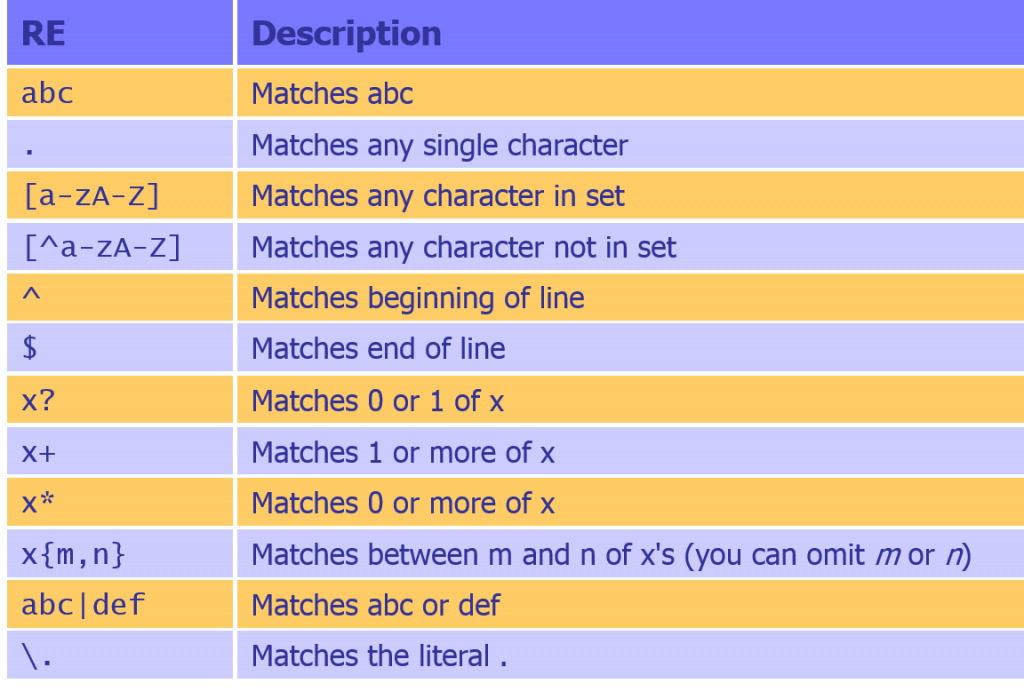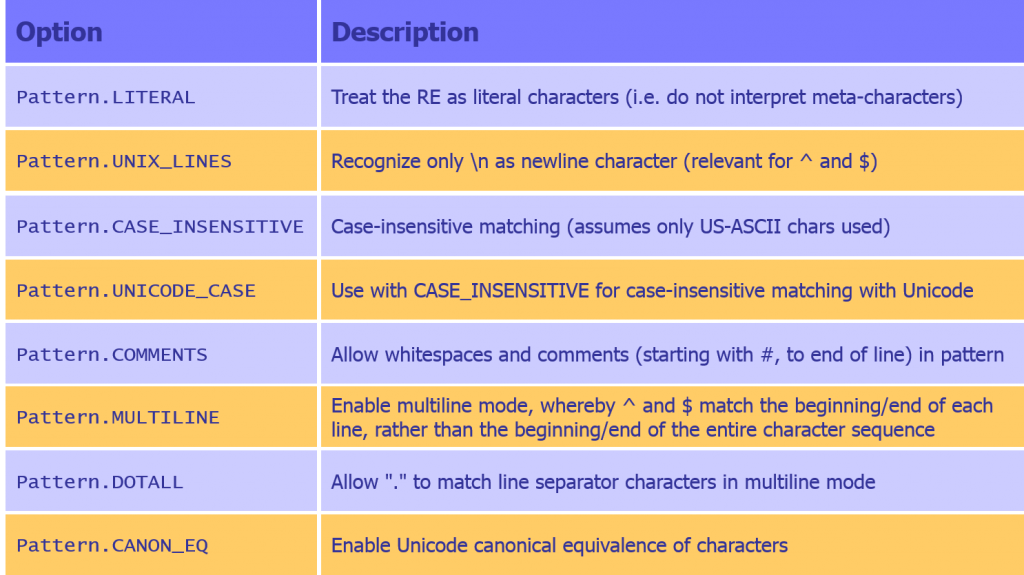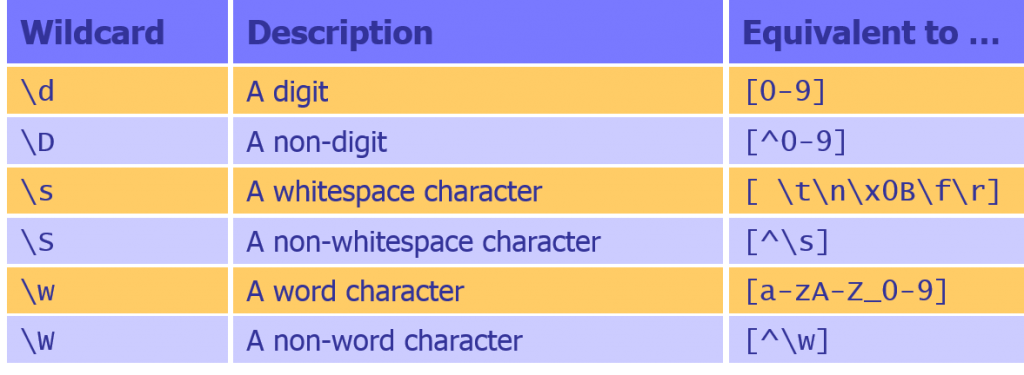In this tutorial you will learn more Java and will look at string builder and regular expressions. This will allow you to write a simple Java app that you can then use in your IDE
About this Tutorial –
Objectives –
This course is aimed at object-oriented developers (e.g. C++ or C#) who need to transition into Java. It is also aimed at those learning to program for the first time; the course covers the Java programming constructs and APIs quickly, focussing on the differences between Java and other OO languages.
Audience
This training course is aimed at OO developers who need to transition into Java.
Prerequisites
No previous experience in Java programming is required. But any experience you do have in programming will help. Also no experience in eclipse is required. But again any experience you do have with programming development environments will be a valuable.
Experience using a contemporary OO language such as C++ or C# would be useful but is not required.
Contents
The Java course cover these topics and more:
- Flow Control: Decision making: if and if-else; The switch statement; Looping: for loops; while loops; do-while loops; for-each style loops; Assertionsv
- Concurrency: Overview of multithreading; Creating new threads; Object locking; Using wait, notify, and notifyAll
- Collections: Overview of Java SE collection classes; Generics; Using List-based collection classes; Using Set-based collection classes; Using Map-based collection classes; Collection techniques
Exam Preparation
The Java course will help you prepare for these certifications:
- Oracle Certified Java Associate – Exam 1Z0-803
- Oracle Certified Java Professional – Exam 1Z0-804
Quick Access
Overview
Estimated Time – 1.5 Hours
Not what you are looking? Try the next tutorial – Inheritance
Lab 1: The Console class
- Overview of the Console Class
- Java 1.6 introduces the java.io.Console class
- Provides methods to access the character-based console device (if any) associated with the current JVM
- Provides simplified access to keyboard/screen (unless I/O has been redirected)
- To get the (singleton) Console instance for the JVM:
import java.io.*;
...
Console console = System.console();
if (console != null) {
...
}
- Java 1.6 introduces the java.io.Console class
- Console Functionality
- Useful methods in the Console class:
- printf() – print formatted string (also format())
- writer() – get a PrintWriter for the Console
- flush() – force buffered content to be written now
- reader() – get a Reader for the Console
- readLine() – read a string (with optional prompt)
- readPassword() – read a password (with optional prompt)
- Useful methods in the Console class:
- Using Console
- Example
Console console = System.console();
if (console != null) {
console.printf("Hello at %s. Please tell me your name: ", new Date());
String name = console.readLine();
String nat = console.readLine("Thanks %s, now tell me your nationality: ", name);
char[] pwChars = console.readPassword("Great %s, you're %s! Password? ", name, nat);
String password = new String(pwChars);
console.printf("Thanks. Your password is: %s", password);
} else {
System.out.println("Sorry, console unavailable.");
}
- Example
Lab 2: The StringBuilder class
- Overview of StringBuilder Class
- String objects are immutable
- Once you’ve created a String object, you can’t modify it
- This enables the JVM to optimize memory usage
- But it can impair performance if you do a lot of string handling
- StringBuilder (and StringBuffer) are mutable
- Assigned an initial capacity (16 characters by default)
- Allows you to change the text
- Automatically resizes when necessary
- StringBuilder vs. StringBuffer:
- StringBuilder has the same API as StringBuffer
- StringBuilder only available in Java 1.5 onwards
- StringBuilder isn’t thread-safe, so faster than StringBuffer
- Recommendation: Use StringBuilder where possible
- String objects are immutable
- StringBuilder Functionality
- Useful methods in the StringBuilder class:
- constructor – optionally specify initial capacity or initial text
- append() – append to text (various overloads)
- delete() – delete text from start to end positions
- insert() – insert at specified position (various overloads)
- replace() – replace text from start to end positions
- toString() – create immutable String from text
- setCharAt() – set character at specific position
- And More…
- StringBuffer has the same methods
- Useful methods in the StringBuilder class:
- Using StringBuilder
- Example
StringBuilder sb1 = new StringBuilder("Hello");
sb1.append(" world");
sb1.append('!');
sb1.insert(5, " Andy and the rest of the");
sb1.insert(10, 43);
String str1 = sb1.toString();
System.out.println(str1);
StringBuilder sb2 = sb1;
sb2.replace(6, 9, "Fred");
sb2.reverse();
String str2 = sb2.toString();
System.out.println(str2);
- Example
- Using the StringBuilder class
- Open UsingStringBuilder.java, and write an application that explores the capabilities of the StringBuilder class
- Suggestions and requirements:
- Write a simple main() method that creates a StringBuilder object with an initial capacity of 50 characters (say), to give it some initial space to grow into
StringBuilder sb1 = new StringBuilder(50);
- Call append() on the StringBuilder object, to append some text
sb1.append(""); ");
sb1.append("Johan ");
sb1.append("21 ");
sb1.append("
System.out.println(sb1);
- View code file.
- Call delete() to delete some of the text
// Delete21
sb1.delete(25, 38);
System.out.println(sb1);
- View code file.
- Call deleteCharAt() to delete a character at a specific position
// Delete the o and the h in Johan
sb1.deleteCharAt(15);
sb1.deleteCharAt(15);
System.out.println(sb1);
- View code file.
- Call insert() to insert new text at various positions
// Insert new text
sb1.insert(24, "UK ");
sb1.insert(24, "M ");
System.out.println(sb1);
- View code file.
- Call replace() to replace text at various positions
// Replace some text
sb1.replace(51, 53, "Wales");
System.out.println(sb1);
- View code file.
- Call setCharAt() to set a character at a specific position
// Set a specific character
sb1.setCharAt(32, 'F');
System.out.println(sb1);
- View code file.
- Finally, call toString() to create an immutable String from the text
String finishedString = sb1.toString();
System.out.println("\nFinished string: " + finishedString);
- View code file.
- Write a simple main() method that creates a StringBuilder object with an initial capacity of 50 characters (say), to give it some initial space to grow into
Lab 3: Formatting techniques
- Overview of Formatting
- Java 1.6 introduced extensive formatting capabilities:
- java.util.Formatter class
- Formats content in a string, stream, or file
- Locale-sensitive
- Extremely parameterized
- String.format() method
- Creates a formatted string
- System.out.format() method
- Outputs a formatted string
- Example of Using Formatter Class
- This example shows some simple Formatter techniques
private static void demoFormatter() {
// Use a StringBuilder to accumulate output, using the UK locale.
StringBuilder sb = new StringBuilder();
Formatter formatter = new Formatter(sb, Locale.UK);
// Simple output, with field-width specifiers.
formatter.format("%2s %2s %2s %2s\n", "A", "B", "C", "D");
// Reorder items, using explicit indices.
formatter.format("%4$2s %3$2s %2$2s %1$2s\n", "A", "B", "C", "D");
// Use different locale (One-off).
formatter.format(Locale.FRANCE, "Here's a big number: %.4f\n", 123456789.1234567);
// Output negative parameter in parentheses.
formatter.format("Stocks and shares this week: %(,.2f\n", -6217.577);
System.out.println(sb.toString());
}
- View code file.
- This example shows some simple Formatter techniques
- Using formatting techniques
- Open Formatting.java, and write some code to explore the formatting capabilities of the Formatter class and the String class
- Suggestions and requirements:
- First, take a look at the demo code that accompanies this chapter (see the DemoNewJavaSEClasses project, and the Formatting.java source file)
- In your application, create a Formatter object, and use it to format strings using various format specifiers (see the demoFormatter() method in the demo code, and experiment with the options)
Scanner scanner = new Scanner(System.in);
System.out.println("Choose a locale [US|NO|FR|UK]: ");
String loc = scanner.next().toUpperCase();
Locale locale;
if (loc.equals("US")) {
locale = Locale.US;
} else if (loc.equals("NO")) {
locale = new Locale("NO");
} else if (loc.equals("FR")) {
locale = Locale.FRENCH;
} else {
locale = Locale.UK;
}
doStringFormatting(locale);
doNumberFormatting(locale);
doTimeFormatting(locale);
doDateFormatting(locale);
scanner.close();
- View code file.
- Use String.format() to achieve the same effect (see the demoStringFormat() method in the demo code)
private static void doStringFormatting(Locale locale) {
System.out.println("\nString formatting");
System.out.printf("Normal strings:\n");
System.out.printf(locale, "%s %s %s %s %s %s %s %n", "Sleepy", "Doc", "Happy", "Grumpy", "Sneezy", "Bashful", "Dopey");
System.out.printf("\nStrings with specific ordering:\n");
System.out.printf(locale, "%7$s %6$s %5$s %4$s %3$s %2$s %1$s %n", "Sleepy", "Doc", "Happy", "Grumpy", "Sneezy", "Bashful", "Dopey");
System.out.printf("\nStrings with a width of 10:\n");
System.out.printf(locale, "%10s %10s %10s %10s %10s %10s %10s %n", "Sleepy", "Doc", "Happy", "Grumpy", "Sneezy", "Bashful", "Dopey");
System.out.printf("\nStrings with a width of 10, left-aligned:\n");
System.out.printf(locale, "%-10s %-10s %-10s %-10s %-10s %-10s %-10s %n", "Sleepy", "Doc", "Happy", "Grumpy", "Sneezy", "Bashful", "Dopey");
}
- View code file.
- Experiment with number formatting (see the demoNumberFormatting() method in the demo code)
private static void doNumberFormatting(Locale locale) {
System.out.println("\n\nNumber formatting");
int num = 255;
System.out.printf("255 in decimal, hex, HEX, and octal:\n");
System.out.printf(locale, "%1$d %1$h %1$H %1$o \n", num);
double pi = 3.14159;
System.out.printf("\n3.14159 as is, to 2DP, to 4DP, and using exponential format:\n");
System.out.printf(locale, "%1$f %1$.2f %1$.4f %e\n", pi);
}
- View code file.
- Experiment with time formatting (see the demoTimeFormatting() method in the demo code)
private static void doTimeFormatting(Locale locale) {
System.out.println("\n\nTime formatting");
Calendar calendar = Calendar.getInstance();
System.out.printf("Complete d/t: %1$tc %n", calendar);
System.out.printf(locale, "24-hr time: %1$tH/%1$tM/%1$tS %n", calendar);
System.out.printf(locale, "12-hr time: %1$tk/%1$tM/%1$tS %1$tp %n", calendar);
System.out.printf(locale, "HH:MM (24): %1$tR %n", calendar);
System.out.printf(locale, "HH:MM:SS (24): %1$tT %n", calendar);
System.out.printf(locale, "HH:MM:SS (12): %1$tr %n", calendar);
}
- View code file.
- Experiment with date formatting (see the demoDateFormatting() method in the demo code)
private static void doDateFormatting(Locale locale) {
System.out.println("\n\nDate formatting");
Calendar calendar = Calendar.getInstance();
System.out.printf(locale, "Complete d/t: %1$tc %n", calendar);
System.out.printf(locale, "Today is: %1$tA %1$tB %1$tY %n", calendar);
System.out.printf(locale, "Abbreviated: %1$ta %1$tb %1$ty %n", calendar);
System.out.printf(locale, "MM/DD/YY: %1$tD %n", calendar);
System.out.printf(locale, "YYYY-MM-DD: %1$tF %n", calendar);
}
- View code file.
Lab 4: Regular expressions
- Basic Regular Expression Syntax
- Support for Regular Expressions in Java
- Support for REs in Java since Java 1.4
- java.util.regex package
- CharSequence interface
- Encapsulates sequence of characters, implemented by String, StringBuilder, StringBuffer, CharBuffer
- Pattern class
- Encapsulates an RE (in “compiled form”)
- Matcher class
- Supports matching of Pattern objects against a CharSequence
- MatchResult interface
- Represents the result of a match operation
- Support for REs in Java since Java 1.4
- Performing a One-Off Pattern Match
- The Pattern class has a static matches() method
- Allows you to perform a one-off pattern match, to see if a character sequence matches a regular expression
- Just returns true or false
- Example
String charseq = "aaaab";
boolean result = Pattern.matches("a*b", charseq);
- View code file.
- The Pattern class has a static matches() method
- Using Compiled Regular Expressions (1)
- If you’re going to use an RE more than once, you should compile it into a Pattern object
- Invoke Pattern.compile() to build a Pattern object
Pattern p = Pattern.compile("a*b");
- View code file.
- Invoke Pattern.compile() to build a Pattern object
- To match an RE match on a character sequence:
- Invoke matcher() on Pattern object, returns Matcher object
Matcher m = p.matcher("aaaab");
- View code file.
- Invoke matcher() on Pattern object, returns Matcher object
- Matcher methods:
- matches()
- lookingAt()
- find()
- group()
- Example
private static void demoMatching(CharSequence source, String regex) {
Pattern p = Pattern.compile(regex);
Matcher m = p.matcher(source);
// Call matches() to see if there's an exact match on the entire source.
if (m.matches()) { ...
// Call lookingAt() to see if there's a match from the start of the source.
if (m.lookingAt()) { ...
// Call find() to see if there's a match somewhere in the source. Note reset() call!
m.reset();
if (m.find()) { ...
}
- View code file.
- The find() method continues searching from the end of the previous match
- Makes repeated matches easy
- Invoke find(n) to match the nth occurrence of RE (it starts at 1)
- Example –
private static void demoRepeatedFinds(CharSequence source, String regex) {
Pattern p = Pattern.compile(regex);
Matcher m = p.matcher(source);
// Find each occurrence of RE in source, in a loop.
while (m.find()) {
System.out.printf("find() matches: %s\n", m.group());
}
// Find the 2nd occurrence of RE in source.
if (m.find(2)) {
System.out.printf("find(2) matches: %s\n", m.group());
}
}
- View code file.
- If you’re going to use an RE more than once, you should compile it into a Pattern object
- Aside: Pattern Compilation Options
- Options for Pattern.compile() method 2nd parameter
- Wildcards
- Greedy and Reluctant Matching
- Capturing Groups
- You can partition an RE into groups
- Parenthesized sub-expressions
- Remember portions of text matched by sub-expressions
"A (glass|bottle|barrel) of (Budweiser|Coors|Milk)"
- View code file.
- E.g. (glass|bottle|barrel) = group 1 and (Budweiser|Coors|Milk) = group 2
- Groups are indexed left to right
- Index 0 is the entire capture
- No account taken of nesting
A((B)(C(D)))
- View code file.
- In this case – “A((B)(C(D)))” this would be index 0 and the (D) would be index 4
- Use (?…) to prevent capture – “Pure” groups do not figure in indexing
- To access a capture group:
- Invoke group(n) method on Matcher object
- Index argument is 1-based
- Invoke groupCount() to determine number of capture groups
- Example:
private static void demoGroups(CharSequence source, String regex) {
Pattern p = Pattern.compile(regex);
Matcher m = p.matcher(source);
// Perform the match.
if (m.matches()) {
// Iterate through all the capture groups.
for (int i = 1; i <= m.groupCount(); i++) { System.out.printf("Group %d match: %s\n", i, m.group(i)); } } } - View code file.
- And when calling this the following code produces the result - Group 1 match: 01792, Group 2 match: 123456
demoGroups("01792 123456", "(0\\d{3,4})[\\s-](\\d{6})");
- View code file.
- You can partition an RE into groups
- Replacing Text Using Reg Exps
- Matcher operations for replacing text:
- replaceFirst(replacementString) - Returns new String where first match is replaced
- replaceAll(replacementString) - Returns new String where all matches are replaced
- Example:
private static void demoReplacement(CharSequence src, String regex, String replacement) {
Pattern p = Pattern.compile(regex);
Matcher m = p.matcher(source);
String result1 = m.replaceFirst(replacement);
System.out.printf("replaceFirst() gives: %s \tsource: %s\n", result1, src);
String result2 = m.replaceAll(replacement);
System.out.printf("replaceAll() gives: %s \tsource: %s\n", result2, src);
}
- View code file.
- And the client code for calling this (see results for yourself) -
demoReplacement("01222-123456 01222-654321 01222-98765", "01222-", "02920-2");
- Matcher operations for replacing text:
- Additions to the String Class
- String class contains some new methods to support REs
- boolean matches(String re)
- String[] split(String re) // optional: int limit
- String replaceFirst(String re, String repl)
- String replaceAll(String re, String repl)
- Example:
private static void demoStringRE() {
String greeting = "Hello mum";
boolean result1 = greeting.matches("Hello mum"); // true
boolean result2 = greeting.matches("Hello"); // false
System.out.printf("Result1=%b, Result2=%b\n", result1, result2);
String path = " Hello. How are you? I'm fine! Thanks!";
String[] pathComponents = path.split("[.?!]");
for (String pc : pathComponents) {
System.out.println(pc);
}
}
- View code file.
- String class contains some new methods to support REs
- Using regular expressions
- Open RegularExpressions.java, and write some code to make use of regular expressions
- Suggestions and requirements:
- First, take a look at the demo code that accompanies this chapter (see the DemoNewJavaSEClasses project, and the RegularExpressions.java source file)
- In your application, write code to do simple pattern matching, as illustrated by the demoSimpleRegex() method in the demo code
import java.util.regex.Matcher;
- View code file.
- Write code to explore the matching functionality provided by the Matcher class, as illustrated by the demoMatching() method in the demo code
private static void doMatching() {
System.out.println("Simple regular expressions:");
Pattern p = Pattern.compile("(Hello)*");
Matcher m1 = p.matcher("HelloHelloHello");
boolean result1 = m1.matches();
System.out.printf("Result1: %b %n", result1); // Should be true.
Matcher m2 = p.matcher("HelloHelloHello What's Going On Here Then");
boolean result2 = m2.matches();
System.out.printf("Result2: %b %n", result2); // Should be false.
Matcher m3 = p.matcher("HelloHelloHello What's Going On Here Then");
boolean result3 = m3.lookingAt();
System.out.printf("Result3: %b %n", result3); // Should be true.
}
- View code file.
- Write code to perform repeated searches on a string, as illustrated by the demoRepeatedFinds() method in the demo code
private static void doRepeatedFinds() {
System.out.println("\nRepeated finds:");
Pattern p = Pattern.compile("[a-z]+");
Matcher m = p.matcher("testing 12345, god natt og takk for alle fisker!");
while (m.find()) {
System.out.printf("Found: %s\n", m.group());
}
}
- View code file.
- Write code to explore the regular expression support built into the String class, as illustrated by the demoStringRE() method in the demo code
private static void doStringRE() {
System.out.println("\nString RE support:");
String greeting = "Good night";
boolean result1 = greeting.matches("Good night"); // true
boolean result2 = greeting.matches("Good"); // false
System.out.printf("Result1=%b, Result2=%b\n", result1, result2);
String path = " This. Is a Message! OK?";
String[] pathComponents = path.split("[.?!]");
for (String pc : pathComponents) {
System.out.println(pc);
}
System.out.println();
}
- View code file.
Well done. You have completed the tutorial in the Java course. The next tutorial is
8. Inheritance
Copyright © 2016 TalkIT®










If you would like to see more content like this in the future, please fill-in our quick survey.